Hazardous Materials (HAZMAT)
Call 9-911 from an on-campus phone or 911 from a cell phone to report an emergency that requires immediate assistance from police and rescue personnel.
Hazardous Materials Spills
Emergency Response Procedures: Chemical, Bio-hazardous Spills
In case of emergency, call x2222 from a Providence College campus phone or 401.865.2222 from your mobile phone.
The following describe procedures for handling various hazardous spill emergencies in the laboratory/studio/workshop or workplace. Chemical spills include liquid and solid spills. Fuel spills include all petroleum-based fuels/oils.
Injury or Illness
All injuries, however slight, must be reported immediately to the supervising faculty member or, in the case of faculty accidents, the department chair. A Student Injury Report Form must be completed and submitted to the department chair and Environmental Health and Safety office within 48 hours. Employee accidents or work-related illnesses must also be reported to Human Resources x2341 within 24 hours.
Chemical/Biohazard Exposure to Skin
- Immediately flush with cool water for at least 15 minutes.
- If there are no visible burns, remove all jewelry and soap area.
- Seek medical attention if a reaction occurs or if there is any doubt about possible problems.
Chemical/Biohazard Exposure to Skin – Serious
- Remove all contaminated clothing.
- Locate the nearest emergency shower and soak for at least 15 minutes.
- Have someone contact the Office of Public Safety at x2222.
- Seek immediate medical attention.
Chemicals in Eyes
- Irrigate eyes for at least 15 minutes with tempered water from emergency eyewash station.
- Remove contact lenses if possible.
- Notify the Office of Public Safety at x2222.
- Seek immediate medical attention.
Smoke and Fumes
- Get out to fresh air.
- DO NOT ENTER a location where potentially dangerous fumes might place you at risk.
- If someone is down, contact emergency personnel and let them enter.
- Seek medical attention for exposure as soon as possible.
Clothing or Laboratory Coat on Fire (Stop, Drop and Roll)
- Extinguish burning clothing by employing STOP, DROP, and ROLL techniques.
- Douse with cold water or use an emergency shower.
- Remove contaminated clothing if possible.
- Cover injured person to prevent shock. Seek medical attention.
Medical Sharps
Medical sharps such as needles, syringes, razors, scalpels, etc. are collected in approved Biohazard Sharps containers. Workplaces that use these instruments are equipped with such containers.
Any loose medical sharps that are found should be turned into the Office of Public Safety (x2222) or the Office of Environmental Health and Safety (x2549), where thy maybe properly disposed of.
Chemical Spills
There are a wide range of chemicals present in a laboratory/studio/workshop. The safe clean-up of a chemical spill requires some knowledge of the properties and hazards posed by the chemical, and any added dangers posed by the location of the spill.
If you believe a spill is beyond your capacity to clean up, do not attempt to do so. STOP and contact the Office of Environmental Health and Safety at x2549.
Spill supplies, which may include absorbents such as spill pads or vermiculite, neutralizing agents, and personal protective equipment, are present in each workspace where hazardous materials are present.
Always consult the SDS of a spilled material, and print a copy of the SDS to send with emergency responders if someone has been exposed and is being taken to receive medical treatment.
Any spill that results in an accidental release to the sewer must be reported to the Office of Environmental Health and Safety immediately.
Minor Spill
A minor spill is characterized by all of the following criteria:
- Hasn’t spread outside the room where the spill occurred.
- Can be contained, absorbed, and/or neutralized.
- Did not result in a fire or explosion, nor does it present a risk of fire or explosion.
- Did not result in personnel requiring medical attention, nor does it present a risk to personal health and safety.
Minor Spill Clean Up
- Alert people in the immediate area of the spill.
- Put on appropriate Personnel Protective Equipment (PPE), i.e., gloves, protective eyewear, and lab coat.
- Contain liquid spills with absorbent material such as spill pads or vermiculite.
- Sweep up solid spills. Avoid generating airborne dust.
- Completely clean the area where spill occurred.
- Place the absorbed/swept up spilled material in a suitable hazardous waste container. Contaminated PPE should be containerized with the spilled material.
Label the container with a hazardous waste label and place it in a main accumulation area.
Major Spill
A major spill is characterized by any of the following criteria:
- Requires evacuation of the area.
- Results in a fire or explosion, or presents a risk of fire or explosion.
- Results in personnel requiring medical attention.
- Presents a risk to personal health and safety, i.e., may result in exposure to toxic substances.
- Has spread beyond the room where the spill occurred.
For a Major Spill or Leak
- DO NOT attempt to clean up a major spill on your own. Leave it to the experts!
- Alert people in the immediate area of the spill.
- Contact the Office of Public Safety at x2222 and stand by in a safe location.
- Only if it’s safe, you may:
- Remove any injured or contaminated persons.
- Help any contaminated persons use the safety shower/eye wash.
- Seek medical attention if you have been exposed.
- If the spill presents a hazard to building occupants, pull the nearest fire alarm to evacuate the building. Notify those in immediate danger. Have someone notify the Office of Public Safety (x2222) to report the nature and location of the spill.
- Do not prop open any fire doors. (fire doors have automatic closers on them.) Close any doors in the immediate area to control access to the spill area.
- If you need to evacuate the area or building, remain uphill and upwind from the site. Remain at your building Rally Point for additional information.
Mercury spill
For a large mercury spill, evacuate the area, call Public Safety at x2222, and keep others clear of the area. For small spills, e.g, broken thermometers, notify the lab supervisor, who should take the following the steps:
- Provide maximum ventilation in the contaminated area.
- If the mercury is spilled in an oven or other heated device, turn off the unit, evacuate the area, and call Public Safety at x2222.
- Avoid contamination of shoes or other items in the area. Never sweep with a broom, as this breaks up the droplets and results in increased vaporization.
- Locate the nearest mercury spill kit.
- Push pools of mercury together. Pick up pools with a medicine dropper, mercury pump, or pipette with a closed bulb and transfer into a plastic bottle.
- Use mercury clean-up powder to form an amalgam of the residual that can then be picked up. All mercury and cleanup-up debris must be disposed of as hazardous waste.
- For assistance, contact Environmental Health and Safety at 401.865.2549.
Fuel and Oil Spills
Spill supplies are located in the physical plant hazardous waste bunker, the power plant, and various mechanical rooms throughout campus. In the event of a fuel (gasoline or diesel) or oil spill, follow these steps only if it is safe:
- Stop the source of the leak.
- Contain the spill.
- Secure the area to prevent pedestrian or vehicular traffic through the area; notify the Office of Public Safety at x2222 to assist if necessary.
- Absorb the spill with spill supplies. Containerize the spill debris, label it with a hazardous waste tag, and put it in the hazardous waste bunker.
- Notify the EHS office at x2549.
If the spill can’t be stopped or contained, or it is not safe to do so, notify the Office of Public Safety to isolate the area. Emergency personnel will handle the cleanup effort.





